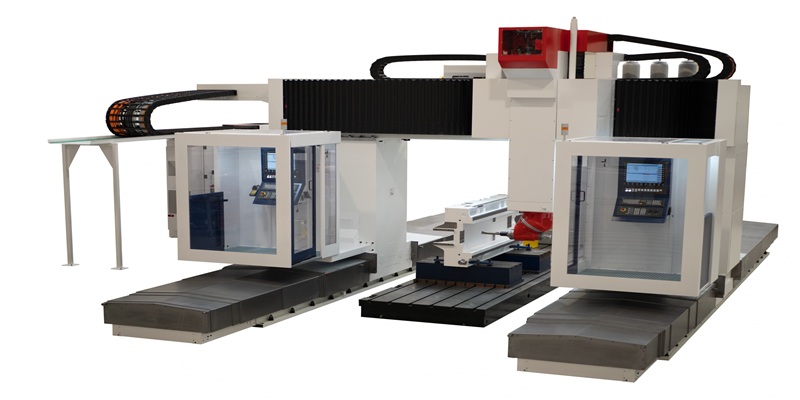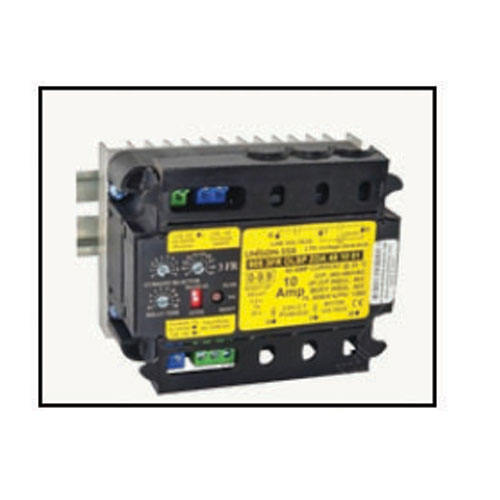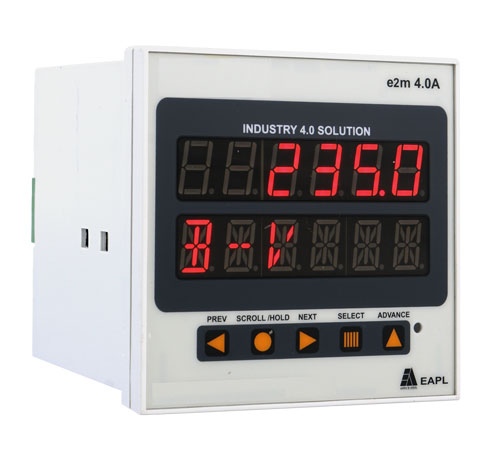Schedule a Call Back
Evolution of 3D printing technology and the Indian industry
 Technical Articles
Technical Articles- Jul 15,16
 3D printing technology that literally took us over the moon is yet to create a firm footing in the Indian industry.
3D printing technology that literally took us over the moon is yet to create a firm footing in the Indian industry.
3D Printing has revolutionised the way products are built. It is used extensively for ideation, envisioning the product design with a model in hand. It is possible to create functional models, which makes it easy for the designers and engineers to validate the product designs and identify the errors which otherwise would not have been noticed in virtual simulation and analysis, especially the design fallacies related to fit, form and ergonomics. With a wide range of materials available in different colours, the companies can now create models that are astonishingly close to the real or final product. Adopting 3D printing earlier in the design cycle helps companies:
 * Reduce the cost of change and cost of error by identifying and rectifying design errors earlier in the design cycle
* Reduce the cost of change and cost of error by identifying and rectifying design errors earlier in the design cycle
* Compress their design and development cycle time
* Build robust products with superior functionality
* Build jigs and fixtures to aid production line and quality control inspection fixtures
* Build products with great aesthetic appeal
* Boost product design innovation
* Optimise development costs, and
* And hit the market early.
3D printing approach to validate product design is much more accurate, precise and less time consuming than traditional methodologies of model creation or CNC machining. It helps companies exert better quality control on product design and performance. Companies now do not have to engage in trial a batch production, which not only is time consuming but also is an extremely expensive way to test product performance. They now can opt for final batch productions as their designs have already been validated at earlier stages. This has eased manufacturing and helped companies optimise time and costs of development.
 3D printing thus improves efficiency, saves time and money while enhancing the product design and performance. Moreover, 3D printing can also aid in manufacturing products for end-use applications, making it ideal for small batch productions. Faster to develop, easy to amend designs, and highly customizable and yet robust in strength, it makes for a perfect approach to produce products for end use application, e.g., jigs, and fixtures. Besides the product design and development applications, 3D printing also finds significant use in the tooling industry. Right from using high temperature materials such as production grade plastics to develop mould inserts for short batch productions using the actual end use materials, to developing accurate patterns for the casting and forging industry, 3D printing technology is penetrating deeper into the manufacturing industry thus becoming an integral part of product design, development and manufacturing.
3D printing thus improves efficiency, saves time and money while enhancing the product design and performance. Moreover, 3D printing can also aid in manufacturing products for end-use applications, making it ideal for small batch productions. Faster to develop, easy to amend designs, and highly customizable and yet robust in strength, it makes for a perfect approach to produce products for end use application, e.g., jigs, and fixtures. Besides the product design and development applications, 3D printing also finds significant use in the tooling industry. Right from using high temperature materials such as production grade plastics to develop mould inserts for short batch productions using the actual end use materials, to developing accurate patterns for the casting and forging industry, 3D printing technology is penetrating deeper into the manufacturing industry thus becoming an integral part of product design, development and manufacturing.
Today, 3D printing finds its applications not just in product development and manufacturing, but is also being increasingly adopted by companies from wide range of industries such as medical and healthcare, infrastructure development, aerospace and defense, space to even the fashion industry. 3D printing has transcended not just the way companies’ build products, but through its medical applications it has also contributed significantly in bettering and enriching human lives.
 3D printing today finds applications in multitude work areas such as, it is used by surgeons for mock surgeries, is being used for dental implants to prosthetics and for developing arms and leg supports. It is also being used to produce end use parts for aircrafts and space satellites; 3D printing is being widely adopted by the architects to develop model houses or build office spaces to even being considered as final building technique; and it also finds multiple applications in fashion industry right from creating 3D printed garments and apparels to fashion jewellery.
3D printing today finds applications in multitude work areas such as, it is used by surgeons for mock surgeries, is being used for dental implants to prosthetics and for developing arms and leg supports. It is also being used to produce end use parts for aircrafts and space satellites; 3D printing is being widely adopted by the architects to develop model houses or build office spaces to even being considered as final building technique; and it also finds multiple applications in fashion industry right from creating 3D printed garments and apparels to fashion jewellery.
Besides the traditional application areas such as product visualisation and validation, 3D printing is now a powerful tool in the hands of creative people, who can use it to give shape and form to their ideas in whichever field they find its applications in.
3D printing is also referred to as Additive Manufacturing process as it builds the product layer by layer as against the conventional CNC process where metal is cut or removed to achieve the desired size and shape. Additive Manufacturing further comprises of several different techniques to develop 3D printed parts. Some of the most popular methodologies are briefly described below:
FDM: Fused Deposition Modelling is an additive manufacturing process that builds the part/product/model using plastic material. Production grade or thermoplastic material in the form of filament is heated to a semi molten stage and deposited to form a layer. Based on the CAD design data, the nozzle in the 3D printer deposits this filament layer by layer on top of each other on a building tray to develop a model. This process is perfect for building parts/models for end use applications due to the strength and robustness of plastic material which can withstand high pressure, heavy loads, and high temperature. Many material options like ABS, ABS+, Nylonetc are available in this.
PolyJet: this is similar to inkjet printing. This additive manufacturing process uses liquefied photopolymers to build the models layer by layer on a building tray, which are then cured by UV light. It is ideal to build parts or models with intricate and fine features. Polyjet can also build part with different colours, different material, e.g., rigid and rubber at a click of button.
SLM: Selective Laser Melting is a metal 3D printing process that uses high powered laser beam to fuse fine metal powder into 3D objects.
3D printing technology is further evolving to combine the strengths of Additive as well as Subtractive manufacturing (or CNC machining) to help consumers derive the benefits of both these technologies simultaneously. This new and smart manufacturing process is called Hybrid Manufacturing.
Advent of Hybrid Manufacturing
Hybrid Manufacturing Technology involves application of both these methodologies, i.e., Additive as well as Subtractive. It deploys the best of both the methodologies to develop parts or models, e.g., complex geometries or intricate designs are best developed using Additive Manufacturing, whereas Subtractive Manufacturing, which works on removal of material like CNC machining, is good for mass machining or production of standard parts with great surface finish. Additive Manufacturing combined with the capabilities of CNC machining is collectively known as ‘Hybrid Additive Manufacturing’. It is used to build metal parts.
The parts produced out of the 3D printers in large cases require post processing to give them the feel or quality of a CNC machined or manufactured part. While metal 3D printing can be ideal for small batch productions, when it comes to large scale manufacturing or machining, CNC has no alternative. But together these technologies could be harnessed concurrently for production. In this technology, you will be able to develop accurate parts even with intricate designs very precisely with the finishing of the CNC milled machine. This can greatly augment the throughput and productivity of the company.
The Future of 3D Printing in India
3D printing technology that literally took us over the moon, is yet to create a firm footing in the Indian industry. This technology is still not as widely spread and penetrated as we would ideally like it to be. The attention that this technology has garnered is not congruent with the adoption ratio, which can be more encouraging. However, its popularity is increasing day by the day and with that, its applications and adoption in the industry will grow exponentially.
Based on the readings of the studies conducted by 6Wresearch, a prominent research firm in India, the 3D printer market in India is estimated to touch about US $79 million by 2021. With the focus on optimizing costs and quality of production, shorter development cycle times, adopting frugal engineering and manufacturing approaches, 3D printing is set to become a natural choice for the industries to invest in to retain their competitive edge. This will increase the penetration of this technology across various industry verticals.
 Currently, the use of 3D printing in India is restricted to conventional applications such as, prototyping for visualisation and validation in the industries such as consumer products, automotive and aerospace. However, with greater awareness of the technology and its benefits, it is now being considered for use as an alternative technique for customised small batch productions and manufacturing tools. 3D printing presently is not being widely used by the medical industry in India. However the advantages of using this technology cannot be ignored nor overlooked, they are apparent and imperative. The medical devices industry has largely adopted 3D printing to lower their costs of product design and development while still building reliable devices. However, the medical community of doctors have not yet been forthcoming to use it for developing implants, or for mock surgeries. It is a proven technology of which the Indian medical community has started taking cognizance of and we will soon see this becoming a vital part of their decision making process.
Currently, the use of 3D printing in India is restricted to conventional applications such as, prototyping for visualisation and validation in the industries such as consumer products, automotive and aerospace. However, with greater awareness of the technology and its benefits, it is now being considered for use as an alternative technique for customised small batch productions and manufacturing tools. 3D printing presently is not being widely used by the medical industry in India. However the advantages of using this technology cannot be ignored nor overlooked, they are apparent and imperative. The medical devices industry has largely adopted 3D printing to lower their costs of product design and development while still building reliable devices. However, the medical community of doctors have not yet been forthcoming to use it for developing implants, or for mock surgeries. It is a proven technology of which the Indian medical community has started taking cognizance of and we will soon see this becoming a vital part of their decision making process.
3D printed parts are robust in strength, faster to develop and easier to modify. As the technology becomes affordable, 3D printing in India will further pave its entry into other segments such as arts and design, interior decoration, fashion accessories, footwear designs, jewellery designs, animation and gaming, furniture and many more.
– ROHIT ARORA
The author is Country Manager – Sales, DesignTech Systems Ltd. Email: info@designtechsys.com
Related Stories

Texmaco Rail Secures Rs 1.32 billion BLSS Wagon Order from TTRL
Texmaco Rail & Engineering Limited has secured an order worth Rs 1.32 billion, excluding taxes, from Touax Texmaco Railcar Leasing Private Limited (TTRL) for the supply of a rake comprising BLSS and..
Read more
Powermill G3 HPC3 Showcases Italian Excellence in Large-scale Precision Milling
Combining robustness, precision and Industry 4.0 connectivity, the Powermill G3 HPC3 exemplifies Italian manufacturing excellence for large-scale, high-accuracy machining.
Read more
Toyota Kirloskar Motor and NISE partner to advance India’s green hydrogen goals
The partnership represents a critical convergence of industry, research, and national policy to accelerate India’s transition toward a clean, secure, and hydrogen-based energy ecosystem.
Read moreRelated Products

Three Pole, Numerical, Non-directional 3 O/c or 2 O/c+1 E/f Relay With Inst. Highset
JVS Electronics Pvt Ltd offers a wide range of three pole, numerical, non-directional 3 O/C Or 2 O/C+1 E/F relay with inst. Highset JNC 066/JNC 066P.

Ph Fwd/ Rev Motor Protection Ssrs
Insys Electrical & Controls offers a wide range of PH FWD/ REV motor protection SSRs.

Multifunction Meter With Event Counter
Electronic Automation Pvt Ltd offers a wide range of multifunction meter with event counter - model-E2M 4.0A












